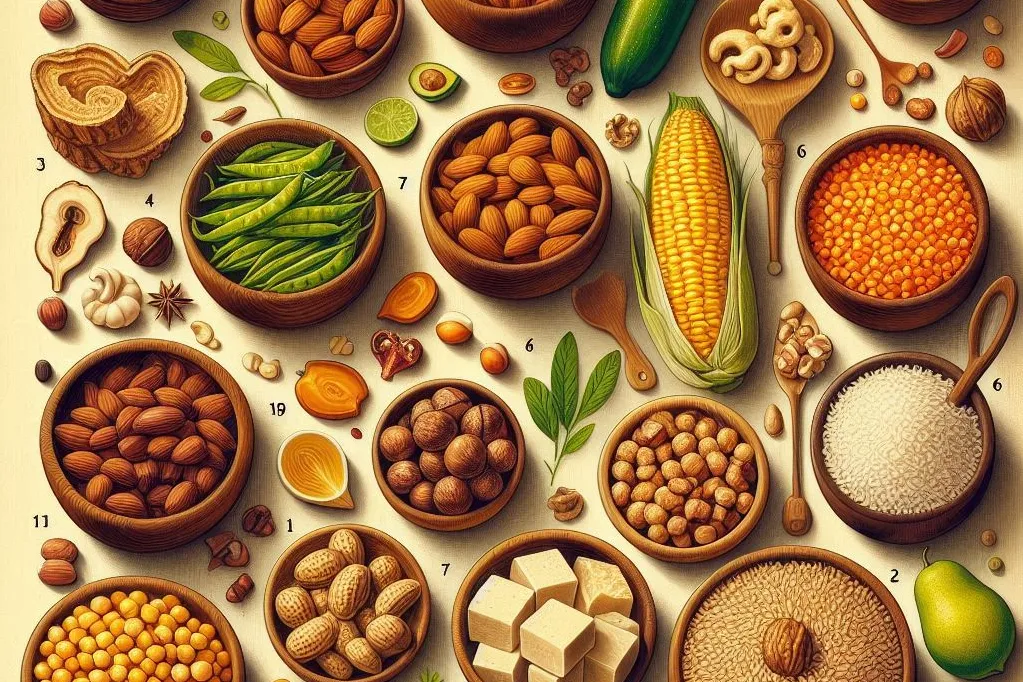What is Phytic Acid
Worried about phytic acid or haven’t even heard about it before? Check out what it does and how to improves the health of our body now!

Phytic acid has the potential to influence mineral absorption, particularly iron. Over time, this may play a role in mineral deficiencies; however, such concerns are minimal when a well-balanced diet is maintained.
Phytic acid, a naturally occurring compound in plant seeds, has been widely studied for its impact on mineral absorption. The presence of this substance can inhibit the uptake of iron, zinc, and calcium, potentially contributing to mineral deficiencies.
“That’s why it is often referred to as an anti-nutrient.”
However, the effects of phytic acid extend beyond this role, as various health benefits have also been associated with its presence. A comprehensive examination of phytic acid reveals its complex influence on overall well-being.

What is Phytic Acid?
Phytic acid, also known as phytate, is naturally present in plant seeds. It functions as the primary storage form of phosphorus within the seed. During germination, phytate undergoes breakdown, releasing phosphorus to support the growth of the developing plant.
Another name for phytic acid is inositol hexaphosphate (IP6).
Due to its antioxidant properties, this compound is frequently utilized in commercial applications as a preservative.
Phytic Acid in Foods
Phytic acid is naturally present only in plant-based foods. Edible seeds, grains, legumes, and nuts contain this compound in varying amounts, while smaller quantities can also be found in certain roots and tubers.
The table below presents the phytic acid content in selected high-phytate foods, measured as a percentage of dry weight.
| Food | Amount of Phytic Acid |
|---|---|
| Almonds | 0.4–9.4% |
| Beans | 0.6–2.4% |
| Brazil Nuts | 0.3–6.3% |
| Hazelnuts | 0.2–0.9% |
| Lentils | 0.3–1.5% |
| Maize (Corn) | 0.7–2.2% |
| Peanuts | 0.2–4.5% |
| Peas | 0.2–1.2% |
| Rice | 0.1–1.1% |
| Rice Bran | 2.6–8.7% |
| Sesame Seeds | 1.4–5.4% |
| Soybeans | 1.0–2.2% |
| Tofu | 0.1–2.9% |
| Walnuts | 0.2–6.7% |
| Wheat | 0.4–1.4% |
| Wheat Bran | 2.1–7.3% |
| Wheat Germ | 1.1–3.9% |
Phytic Acid and Mineral Absorption
The presence of phytic acid can interfere with the absorption of essential minerals such as zinc, iron, and calcium.
This effect occurs during a single meal rather than throughout the entire day. In other words, mineral absorption is primarily reduced when high-phytate foods are consumed, but subsequent meals remain largely unaffected.
For instance, the consumption of nuts between meals may lower the absorption of iron, zinc, and calcium from those nuts, while the absorption of minerals from a later meal remains unchanged.
Regular intake of high-phytate foods with most meals may contribute to mineral deficiencies over time. While this is not typically a concern when a well-balanced diet is maintained, it may become significant in cases of malnutrition or in regions where grains or legumes serve as primary food sources.

Methods for Reducing Phytic Acid in Foods
Completely avoiding foods that contain phytic acid is not ideal, as many of these foods provide essential nutrients and health benefits. In regions where food availability is limited, grains and legumes often serve as dietary staples, making their consumption necessary.
Rather than eliminating these foods, various preparation methods can be used to significantly reduce phytic acid content:
- Soaking – Grains and legumes are commonly soaked in water overnight to lower phytate levels .
- Sprouting – Also known as germination, this process promotes phytate breakdown in seeds, grains, and legumes.
- Fermentation – Organic acids produced during fermentation aid in reducing phytate content. Lactic acid fermentation, such as that used in sourdough preparation, is particularly effective.
A combination of these methods can lead to a significant decrease in phytic acid levels.
“For example, cooking legumes for 1 hour can reduce their phytic acid content by up to 80%” .
Additionally, sprouting and lactic acid fermentation further enhance the breakdown of phytic acid.
Health Benefits of Phytic Acid
Phytic acid serves as an example of a compound that can have both beneficial and limiting effects, depending on the context.
For many individuals, this plant-derived substance functions as an antioxidant and may offer protective effects against insulin resistance.
“Scientists have even suggested that phytic acid may be part of the reason why whole grains have been associated with a reduced risk of colon cancer“.

Phytic Acid and Its Impact on Health
When a balanced diet is maintained, phytic acid does not pose a significant health concern. However, for individuals at risk of iron or zinc deficiency, dietary variety is recommended, and high-phytate foods should not be included in every meal.
This consideration is particularly important for those with iron deficiency, as well as for individuals following vegetarian or vegan diets (.
Iron in food exists in two forms:
- Heme iron – Found in animal-based foods such as meat, this form is efficiently absorbed.
- Non-heme iron – Present in plant-derived foods, this form is absorbed less effectively and is more susceptible to inhibition by phytic acid.
Zinc absorption is also influenced by dietary composition, though it remains well absorbed from meat, even in the presence of phytic acid.
“As a result, mineral deficiencies caused by phytic acid are rarely a concern among meat eaters.”
However, when diets rely heavily on high-phytate foods while lacking meat or other animal-derived products, the risk of mineral deficiencies increases. This is particularly relevant in regions where whole grain cereals and legumes form a substantial part of daily nutrition.

Summary
- Mineral Absorption – High-phytate foods like grains, nuts, and legumes can reduce iron and zinc absorption.
- Preparation Methods – Soaking, sprouting, and fermentation help lower phytic acid levels.
- Dietary Impact – Regular meat consumption minimizes the risk of deficiencies caused by phytic acid.
- Health Benefits – Despite reducing mineral absorption, phytic acid provides antioxidant and protective effects.
- Balanced Nutrition – When consumed as part of a varied diet, the benefits of high-phytate foods outweigh potential drawbacks.
